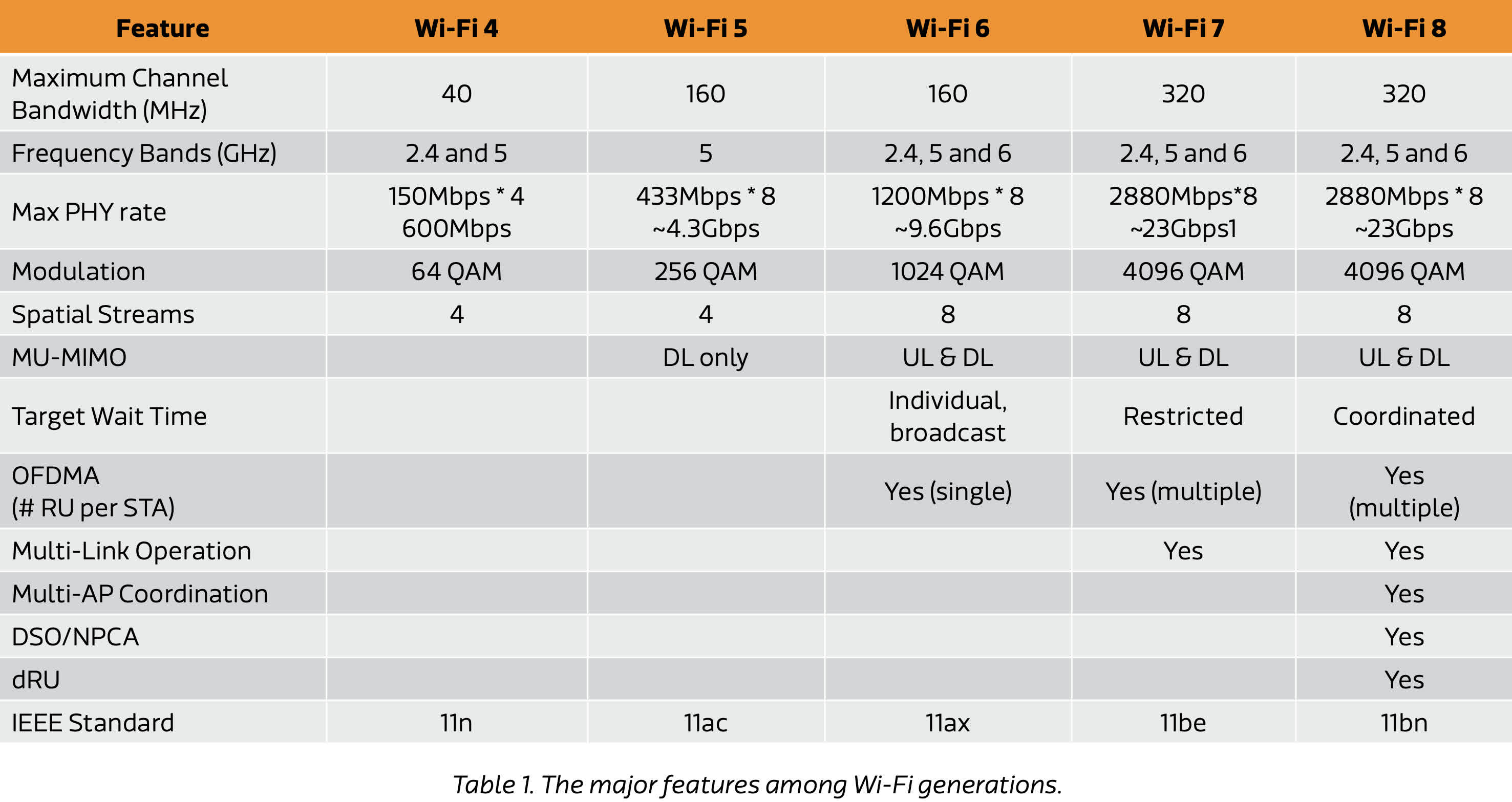www.techspot.com
Forward-looking: Wireless technology is continuously evolving. Despite the IEEE having not ratified WiFi 7 yet, WiFi 8 is already in the works. WiFi 8, officially designated IEEE 802.11bn, is slated for release in September 2028, so we have a while before we see mass implementation. While full details have not emerged on the new standard, we know a few things about it. A white paper by MediaTek notes that 802.11bn will be almost identical to 802.11be (WiFi 7). The chart below shows that the maximum channel bandwidth remains at 320MHz with a maximum physical layer rate of 23Gbps. Of course, these theoretical thresholds are under optimum "laboratory" conditions. MediaTek estimates real-world results to be around 80 percent of those numbers.The primary difference will be in its throughput efficiency. Instead of focusing on speed, the working group is improving reliability. If you have ever run a speed test on your WiFi, you may have noticed how jaggy the download speed is sometimes, with bursts of speed for a second and then plummeting before being averaged with the packets sent during the test. The IEEE wants to level that out, making wireless connections more reliable and consistent.The current plan is to have WiFi capable of supporting networks with minimum aggregated throughput reaching 100Gbps, enough to handle multiple gigabit-speed connections through a single router. The blueprint for enabling this involves targeting how devices interact with the network. A few notable advancements include Coordinated Spatial Reuse, Coordinated Beamforming, and Dynamic Subchannel Operation.Coordinated Spatial Reuse enables access points to harmonize their power outputs. It allows closer devices to optimize their connections without interfering with distant ones. Early tests of this technology have shown increases in throughput of up to 25 percent.Coordinated Beamforming is an extension of beamforming techniques seen in previous generations. Devices with Co-BF can route signals more accurately between devices in a crowded network. While Co-BF will be barely noticeable in small networks, it could be a game changer for public hotspots or home networks with many connected devices. // Related StoriesLastly, Dynamic Subchannel Operation assigns data subchannels to devices based on their capabilities and needs. For example, if several machines are downloading the same file, DSO will automatically assign the more advanced devices a subchannel for downloading the file faster. This technology already exists in WiFi 7 but has to be administered manually. WiFi 8 access points can automatically determine the capabilities and needs of each device on the network and route data more efficiently.WiFi 8's focus on user experience over speed is a notable shift in the 802.11 design philosophy. When implemented, the final draft of the 802.11bn standard should bring smoother, more efficient network environments. For home users, this means a more seamless wireless experience with fast, stable connections. For enterprise users, WiFi should provide the same speed and reliability without some of the more complex administration tasks.




